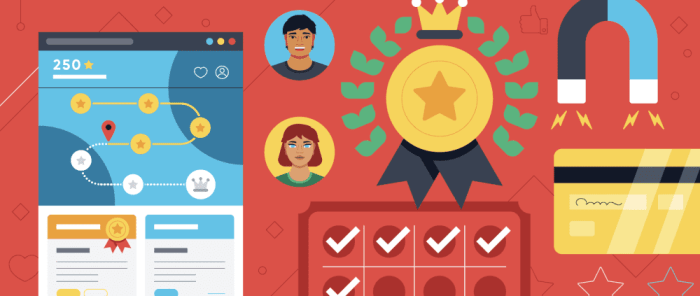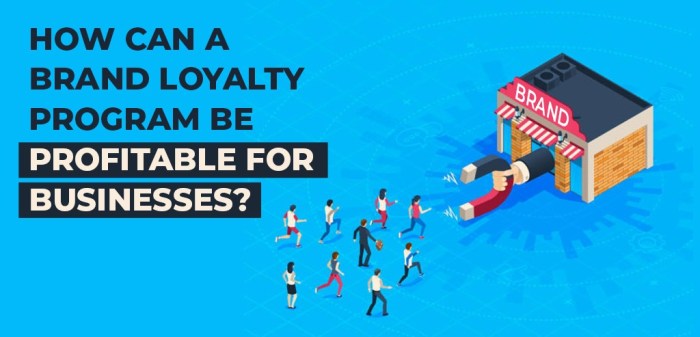Developing Brand Loyalty Programs opens the door to building lasting relationships with customers. In this journey through the world of marketing strategies, we’ll explore the ins and outs of creating programs that keep customers coming back for more.
From defining the concept to designing and implementing strategies, this guide will equip you with the tools needed to cultivate brand loyalty in today’s competitive market.
Defining Brand Loyalty Programs

Brand loyalty programs are initiatives implemented by businesses to reward and incentivize customers for their repeat purchases and ongoing support of the brand. These programs aim to create a strong bond between the customer and the brand, encouraging long-term customer loyalty and retention.
Importance of Brand Loyalty Programs
Brand loyalty programs are crucial in marketing as they help businesses to:
- Build Strong Customer Relationships: By offering rewards and exclusive benefits, brand loyalty programs create a sense of appreciation and value for customers, fostering a deeper connection with the brand.
- Drive Repeat Purchases: Encouraging customers to return to make repeat purchases through rewards and incentives boosts sales and revenue for the business.
- Increase Customer Lifetime Value: By retaining loyal customers, brand loyalty programs contribute to higher customer lifetime value, as loyal customers tend to spend more over time.
Examples of Successful Brand Loyalty Programs
Some well-known companies with successful brand loyalty programs include:
- Starbucks Rewards: Starbucks offers a loyalty program where customers earn stars for each purchase, leading to free drinks and other perks. This program has been highly effective in driving customer retention and engagement.
- Amazon Prime: Amazon’s subscription-based loyalty program, Amazon Prime, provides members with benefits such as free two-day shipping, exclusive deals, and access to streaming services. This program has significantly contributed to Amazon’s customer loyalty and retention.
- Sephora Beauty Insider: Sephora’s loyalty program rewards customers with points for every purchase, which can be redeemed for beauty products and exclusive experiences. This program has been successful in building a loyal customer base in the beauty industry.
Types of Brand Loyalty Programs
Brand loyalty programs come in various forms, each designed to engage customers and encourage repeat purchases. Let’s explore different types of brand loyalty programs and their effectiveness.
Points-Based Loyalty Programs
- Points-based loyalty programs are one of the most common types, where customers earn points for every purchase made.
- Customers can redeem these points for rewards, discounts, or free products, incentivizing them to continue buying from the brand.
Tier-Based Loyalty Programs
- In tier-based loyalty programs, customers move up different levels or tiers based on their spending or engagement with the brand.
- As customers reach higher tiers, they unlock exclusive benefits such as priority customer service, special offers, or early access to sales.
Coalition Loyalty Programs
- Coalition loyalty programs involve multiple brands coming together to offer a combined loyalty program.
- Customers can earn and redeem points across different participating brands, increasing the value and flexibility of the rewards.
Comparing and Contrasting Loyalty Programs
- Points-based programs are effective for encouraging frequent purchases and building a loyal customer base through rewards.
- Tier-based programs create a sense of exclusivity and progression, motivating customers to reach higher tiers for better rewards.
- Coalition programs expand the reach of loyalty programs and offer customers more options for earning and redeeming rewards.
Examples of Companies using Different Loyalty Programs, Developing Brand Loyalty Programs
- Starbucks (Points-Based): Starbucks Rewards allows customers to earn stars for every purchase, leading to free drinks, food, and other perks.
- Sephora (Tier-Based): Sephora’s Beauty Insider program has different tiers with increasing rewards like birthday gifts, exclusive events, and free makeovers.
- Plenti (Coalition): Plenti was a coalition loyalty program in the U.S. involving brands like AT&T, Macy’s, and ExxonMobil, allowing customers to earn and redeem points across various partners.
Designing a Brand Loyalty Program: Developing Brand Loyalty Programs
When it comes to designing a brand loyalty program, there are several key steps that need to be taken in order to ensure its success. Understanding your target customers, creating engaging rewards, and incentives are crucial components of a successful program.
Identifying and Understanding Target Customers
To design a successful brand loyalty program, it is essential to identify and understand your target customers. This involves conducting market research to gather information about their preferences, behaviors, and purchasing habits. By knowing your target audience, you can tailor the program to meet their specific needs and preferences.
- Utilize customer data and analytics to segment your customers based on demographics, psychographics, and buying patterns.
- Conduct surveys, focus groups, or interviews to gather feedback directly from your customers.
- Monitor social media channels and online reviews to gain insights into customer opinions and sentiments.
Creating Engaging Rewards and Incentives
One of the key aspects of a successful brand loyalty program is creating engaging rewards and incentives that motivate customers to continue engaging with your brand. These rewards should be valuable, relevant, and personalized to each customer’s preferences.
- Offer exclusive discounts, promotions, or access to limited-edition products for loyal customers.
- Implement a points-based system where customers can earn rewards based on their purchases or engagement with the brand.
- Create a tiered loyalty program that offers increasing benefits as customers move up levels based on their loyalty to the brand.
Implementing and Managing Brand Loyalty Programs

Implementing and managing brand loyalty programs is crucial for ensuring customer retention and long-term success. By effectively implementing these programs and utilizing the right tools, businesses can create a loyal customer base and drive repeat purchases.
Technology and Tools for Managing Loyalty Programs
Utilizing technology is essential for managing brand loyalty programs effectively. Customer relationship management (CRM) software can help businesses track customer behavior, preferences, and engagement with the loyalty program. Additionally, data analytics tools can provide valuable insights into customer trends and help optimize the program for maximum impact.
Best Practices for Monitoring and Optimizing Brand Loyalty Programs
– Regularly analyze customer data to identify trends and patterns in behavior.
– Solicit feedback from customers to understand their satisfaction levels and areas for improvement.
– Offer personalized rewards and incentives based on individual customer preferences.
– Continuously optimize the program based on performance metrics and customer feedback.
– Implement a seamless user experience across all touchpoints to enhance customer engagement and loyalty.





